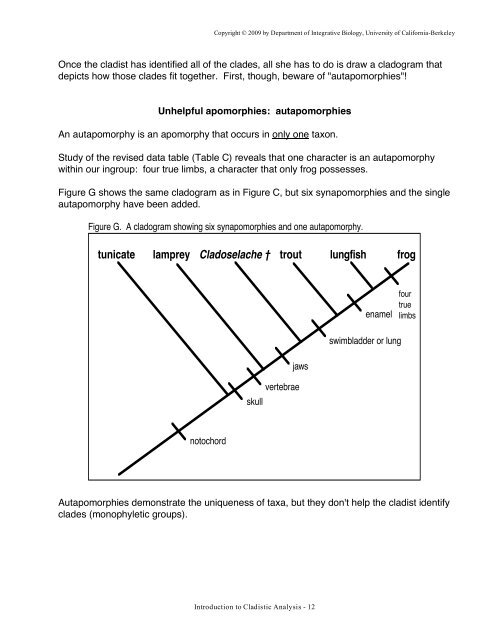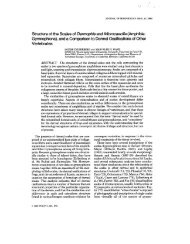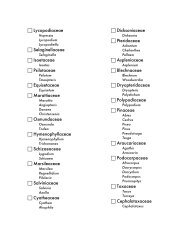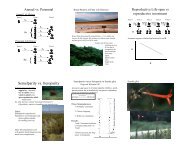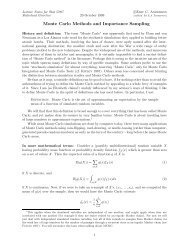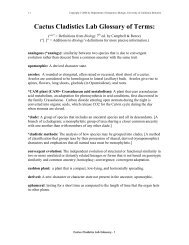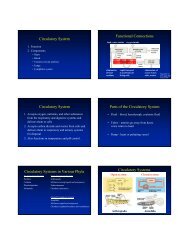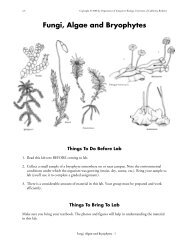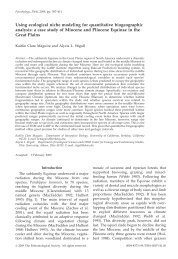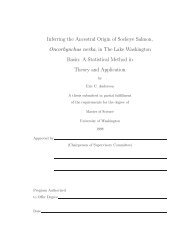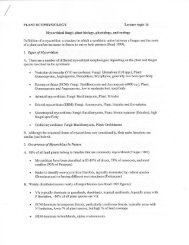Introduction to Cladistic Analysis - Integrative Biology - University of ...
Introduction to Cladistic Analysis - Integrative Biology - University of ...
Introduction to Cladistic Analysis - Integrative Biology - University of ...
Create successful ePaper yourself
Turn your PDF publications into a flip-book with our unique Google optimized e-Paper software.
Copyright © 2009 by Department <strong>of</strong> <strong>Integrative</strong> <strong>Biology</strong>, <strong>University</strong> <strong>of</strong> California-Berkeley<br />
Once the cladist has identified all <strong>of</strong> the clades, all she has <strong>to</strong> do is draw a cladogram that<br />
depicts how those clades fit <strong>to</strong>gether. First, though, beware <strong>of</strong> "autapomorphies"!<br />
Unhelpful apomorphies: autapomorphies<br />
An autapomorphy is an apomorphy that occurs in only one taxon.<br />
Study <strong>of</strong> the revised data table (Table C) reveals that one character is an autapomorphy<br />
within our ingroup: four true limbs, a character that only frog possesses.<br />
Figure G shows the same cladogram as in Figure C, but six synapomorphies and the single<br />
autapomorphy have been added.<br />
Figure G. A cladogram showing six synapomorphies and one autapomorphy.<br />
tunicate lamprey Cladoselache † trout lungfish frog<br />
no<strong>to</strong>chord<br />
skull<br />
vertebrae<br />
jaws<br />
<strong>Introduction</strong> <strong>to</strong> <strong>Cladistic</strong> <strong>Analysis</strong> - 12<br />
enamel<br />
swimbladder or lung<br />
four<br />
true<br />
limbs<br />
Autapomorphies demonstrate the uniqueness <strong>of</strong> taxa, but they don't help the cladist identify<br />
clades (monophyletic groups).


